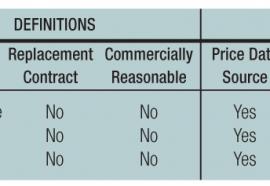A Day in the Life of Transmission Congestion
A forecast for California on Aug. 16, 2006
The Man Who Would Be King
Exelon Chairman, President, and CEO John W. Rowe, on the proposed merger that would create the largest utility in the United States.
Exelon's Epic End Game
Electric M&A: The merger with PSE&G may herald a new industry structure, squarely at odds with regional markets.
Capacity Markets: A Bridge to Recovery?
A review of the ongoing evolution of market design.
The Bigger CIS Picture
Data Mining and Warehousing: Many utilities have no ability to turn raw customer information into significant insights about their business.
Mastering the Mastering Agreement
Special Series Part 5: How to find "commercially reasonable" valuation in power contract terminations.
Contract termination should be easy. Consult the applicable master agreement, calculate the close-out amount, and send or receive a check. If only it were so. In this discussion, we investigate the guidance offered in the key electricity master agreements regarding the calculation of settlement amounts following an event of default and subsequent termination. We also illustrate what we perceive to be a "commercially reasonable" or "good faith" approach to determining settlement amounts.
Gas Executives Forum: The New Downstream Dynamic
Gas distributors tell how their business strategies are changing in response to issues such as higher gas prices, electric M&A, LNG, and gas pipeline development.
Energy-Tech Venture Capital: The Next Disruptive Technology
New ideas that may transform the utilities industry.
Utilities and BPL: Betting Against the Odds
Why broadband over power line (BPL) can't stand alone as a high-speed Internet offering.











